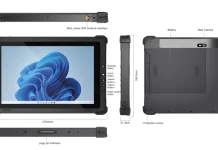Introduction
In the era of digitalization, data has become a cornerstone of decision-making across diverse industries. However, the sheer volume and complexity of data can be overwhelming. This is where statistical research emerges as a guiding compass, enabling us to navigate through the data depths and extract valuable insights. Statistical research is a multifaceted discipline that encompasses a range of techniques, methodologies, and applications. There are many types of statistical research but In this article, we will plunge into the world of statistical research, unveiling its various dimensions and understanding its significance in harnessing the power of data.
The Essence of Statistical Research
At its core, statistical research is the systematic process of collecting, analyzing, interpreting, and drawing conclusions from data. It goes beyond mere observation, providing a structured framework to make sense of information and derive meaningful patterns, relationships, and trends. Statistical research is not confined to a single domain; its principles are applicable across disciplines, enabling evidence-based decision-making and fostering innovation.
Exploring the Spectrum
1. Data Collection and Sampling
The journey of statistical research commences with data collection. This phase involves sourcing, gathering, and organizing data that pertains to the research question. However, working with entire datasets can be unwieldy, time-consuming, or impractical. This is where sampling comes into play. Researchers select a subset of the data, known as a sample, that is representative of the larger population. This process ensures that insights drawn from the sample can be generalized to the entire dataset.
2. Descriptive Statistics and Visualization
Descriptive statistics and visualization are the initial steps in the process of unraveling insights from data. Descriptive statistics involve summarizing and describing the main features of the dataset. Measures such as mean, median, and standard deviation provide a snapshot of the data’s central tendencies and variability. Complementing these statistics, visualization techniques such as histograms, scatter plots, and pie charts offer a visual representation of data distribution, aiding in identifying outliers and trends.
3. Hypothesis Formulation and Testing
Hypothesis formulation is a pivotal step in statistical research. A hypothesis is a testable statement that suggests a relationship between variables. It guides the research direction and lays the foundation for subsequent analysis. Hypothesis testing involves subjecting the formulated hypotheses to rigorous statistical tests to determine their validity. Statistical tests, such as t-tests or chi-square tests, assess the significance of observed differences, enabling researchers to infer whether the findings are likely due to chance or if they represent genuine relationships.
4. Regression Analysis: Unveiling Relationships
Regression analysis is a powerful tool that reveals the relationships between variables. It explores how one variable, known as the dependent variable, changes as another variable, the independent variable, changes. Through regression analysis, researchers can model and predict outcomes, making it invaluable for forecasting and decision-making. Linear regression, for instance, can help predict sales based on advertising expenditure, enabling businesses to optimize their marketing strategies.
5. Correlation and Causation
While correlation and causation are related concepts, they require distinct approaches in statistical research. Correlation indicates a relationship between two variables, but it doesn’t imply causation. Establishing causation requires additional rigor, often involving controlled experiments. Statistical methods play a crucial role in differentiating between mere correlation and genuine causation, guiding researchers to more accurate conclusions.
6. Advanced Techniques: Machine Learning and Big Data
The advancement of technology has given rise to sophisticated techniques within statistical research. Machine learning, a subset of artificial intelligence, empowers computers to learn from data and make predictions or decisions. It has applications in diverse fields, from image recognition to autonomous vehicles. Additionally, the era of big data has ushered in challenges and opportunities. Statistical research is instrumental in devising strategies to analyze and extract insights from massive datasets, enhancing decision-making capabilities.
Applications Across Domains
1. Healthcare and Medicine
Statistical research is at the forefront of medical breakthroughs and healthcare optimization. It aids in clinical trials by analyzing patient data to determine the efficacy of treatments. Moreover, epidemiological studies employ statistical methods to identify disease patterns, contributing to disease prevention and control strategies.
2. Business and Economics
In the business world, statistical research fuels strategic decision-making. Market research relies on statistical techniques to analyze consumer behavior and preferences. Economic models use statistical data to predict financial trends and inform monetary policies.
3. Social Sciences
Statistical research empowers social scientists to explore societal trends and phenomena. It helps in understanding factors influencing voting patterns, crime rates, education outcomes, and more. Through statistical analysis, social scientists contribute to evidence-based policy recommendations.
Challenges and Considerations
While statistical research offers invaluable insights, it also presents challenges. Ensuring data quality, addressing biases, and selecting appropriate methodologies are crucial steps. Ethical considerations come into play when dealing with sensitive data or when results impact individuals or communities. Transparency in research design, analysis, and interpretation is essential for maintaining credibility and avoiding misinterpretation.
Conclusion
In a world inundated with data, statistical research serves as a guiding light, illuminating the path to informed decision-making. From data collection to hypothesis testing, from regression analysis to machine learning, the spectrum of statistical research techniques empowers us to make sense of the complexity around us. This journey into data depths transforms raw information into actionable insights, enabling us to innovate, predict, and shape the future across a myriad of fields. Through statistical research, we unlock the secrets hidden within data, and in doing so, we harness the power to make meaningful contributions to our world.


























![InstaPro APK Download Latest Version 2023 [Anti Ban]](https://olo.my.id/wp-content/uploads/2023/10/instapro-100x70.jpg)

